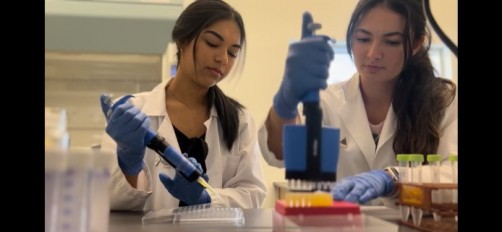Antibiotic-resistant bacteria pose of the greatest threats to global public health. In 2019, deaths due to antibiotic resistant bacteria outpaced deaths due to HIV and malaria. Given the lack of innovation in the discovery of new antibiotics, it is critical to determine the mechanisms by which bacteria tolerate existing antibiotic so that we can improve their effectiveness.
One way that bacteria can tolerate antibiotics is through the inoculum effect. Essentially, the higher the density of bacteria in an infection, the more antibiotic is required to treat the infection. While the inoculum effect has been observed for nearly all known antibiotics, and has been documented since the 1960s, a common mechanism to explain inoculum effect for multiple antibiotics has not been found.
Scientists recently discovered that interactions between how fast bacteria grow and the amount of energy (or metabolism) bacteria have can explain the inoculum effect for multiple antibiotics and bacteria species. This new research also shows that providing different nutrients to the bacteria that change growth rate and energy levels can eliminate the inoculum effect.
The research paper was just published in Science Advances.
“Our discovery is the first step toward discovering new antibiotics that can be used to successfully treat very challenging high bacterial density infections,” said Robert P Smith, PhD, associate professor and research scientist at Cell Therapy Institute at Nova Southeastern University’s (NSU) Dr. Kiran Patel College of Allopathic Medicine (NSU MD). “We hope that our work will eventually save lives as we deal with the growing threat of antibiotic resistant bacteria.”
This research has the potential to reduce the amount of antibiotics used in the clinic and may pave the way for the discovery of new antibiotics that change growth rate and energy levels in bacteria.
Source: Nova Southeastern University (NSU)
